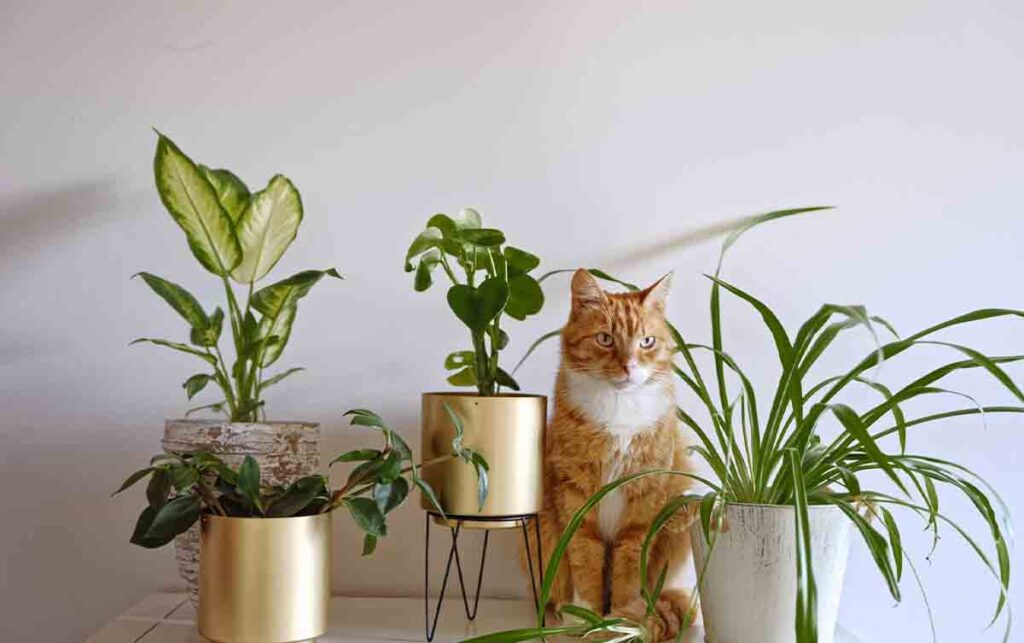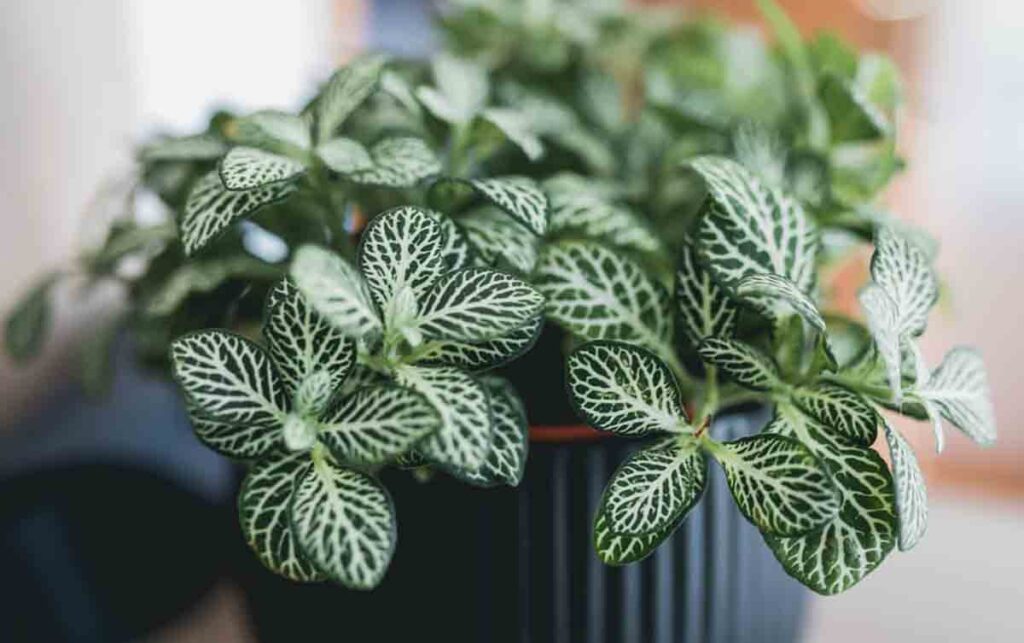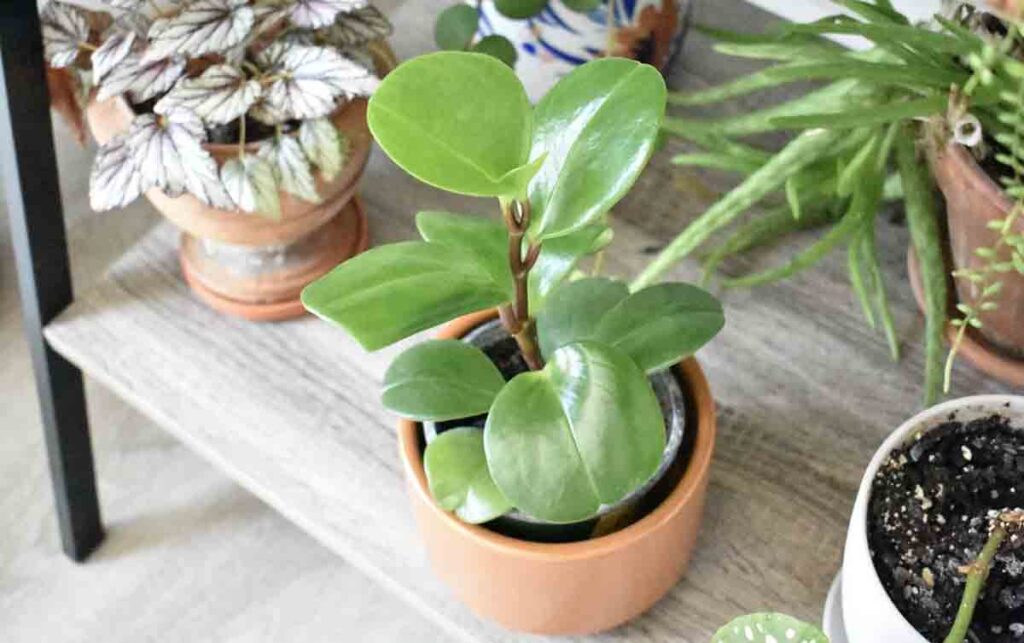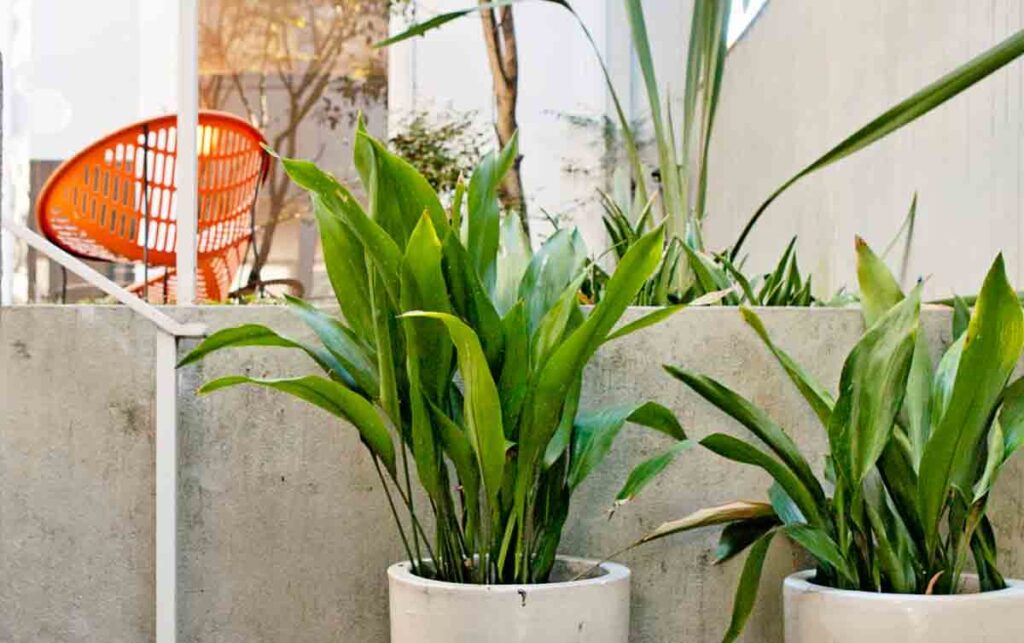If you share your home with cats and plants, it’s important to choose only cat-safe houseplants for your indoor green space. Cats are notorious for getting into houseplants, often gnawing on or nibbling the leaves. By choosing plants that are non-toxic to cats, you won’t have to worry about a scary trip to the vet if your cat decides to snack on your plants. What types of plants can you add that grow well in low light and aren’t a threat to your cats? Check out these 7 non-toxic low-light houseplants.
Veined Plants
Veined plants are known for their unique foliage. Deep green leaves are covered in thin, branching lines of white or red, making them very eye-catching plants that are non-toxic to cats. Since they are tropical plants, they prefer warm temperatures and high humidity. These plants are not well-suited to direct light and do well in medium to low light conditions.
- Light: Low to medium indirect light
- Water: Prefers moist soil conditions. Water before the soil dries out.
Prayer Plant (Maranta leuconeura)
Prayer plants have leaf patterns that range from light green and dark green to shades of red. If you want a unique, cat-safe houseplant, this one should be on your list for your nighttime ritual—the plant’s leaves fold up at night, resembling praying hands. It’s important to provide prayer plants with well-drained soil, as soggy soil can cause root rot and plant death.
Licorice powder: Benefits, Uses, Precaution and Dosage
- Light: Bright, indirect light. Never direct sunlight.
- Water: Keep the soil evenly moist.
Baby Rubber Plant (Peperomia obtusifolia)
Baby rubber plants have thick, shiny, vibrant green leaves and rounded, red stems. These eye-catching plants are easy to care for and can handle inconsistent watering. As tropical plants, they enjoy medium to high humidity levels. For a low-light houseplant, choose a cultivar that is not variegated, as they do best with limited light levels. If possible, provide the plant with some light during the day, but keep in mind that direct sunlight can burn the plant.
What Happens To Your Body When You Eat Potatoes
- Light: Suitable for medium to low light levels (especially non-variegated cultivars)
- Water: Infrequent watering.
Cast Iron Plant (Aspidistra elatior)
Cast iron plants are a great choice for a large, low-light plant that is safe for cats. These plants can reach up to 3 feet tall, with large leaves growing about 2 feet long. Cast iron plants require very little care and cannot tolerate overwatering, making them perfect for those who tend to forget to water.
How to make tasty Pot Phirni at Home
- Light: Low light. Protect from direct sunlight.
- Water: Infrequent watering.
Spider Plant (Chlorophytum comosum)
Spider plants are a popular houseplant choice because of their ease of care and unique foliage. Spider plants produce branches that form baby plants resembling spiders, which hang down from the mother plant. These plants do well with some natural light but can tolerate less vigorous growth if grown in low light.
What are the health benefits of papaya?
- Light: Low light tolerant
- Water: Moderate watering.
Zebra Calathea (Calathea zebrina)
Zebra Calathea has eye-catching foliage with stripes in bright and dark green. These plants can also feature white or pink patterns on their leaves. They can reach 3 feet tall and make a beautiful statement plant in any room. Although they prefer bright, indirect, filtered light, they can also tolerate a shady spot in your home. This plant should be given as much natural light as possible.
Easy Remedies for Glowing Skin
- Light: Bright, indirect, filtered light
- Water: Regular watering. Keep the soil moist, but not soggy.
Burro’s Tail (Sedum morganianum)

Burrow’s Tail is a succulent plant with stems covered in small, fleshy leaves. It’s important to note that these small leaves can easily be knocked off the stem, so it’s best to place this plant in a location where it won’t be disturbed. Burrow’s Tail plants grow most vigorously in bright, indirect light, but they are also adaptable to low-light conditions. Expect a slightly leggier appearance as the plant grows.
Top Foods That Can Boost Your Hemoglobin Naturally
- Light: Bright, indirect light (adaptable to low light)
- Water: Moderate watering.







